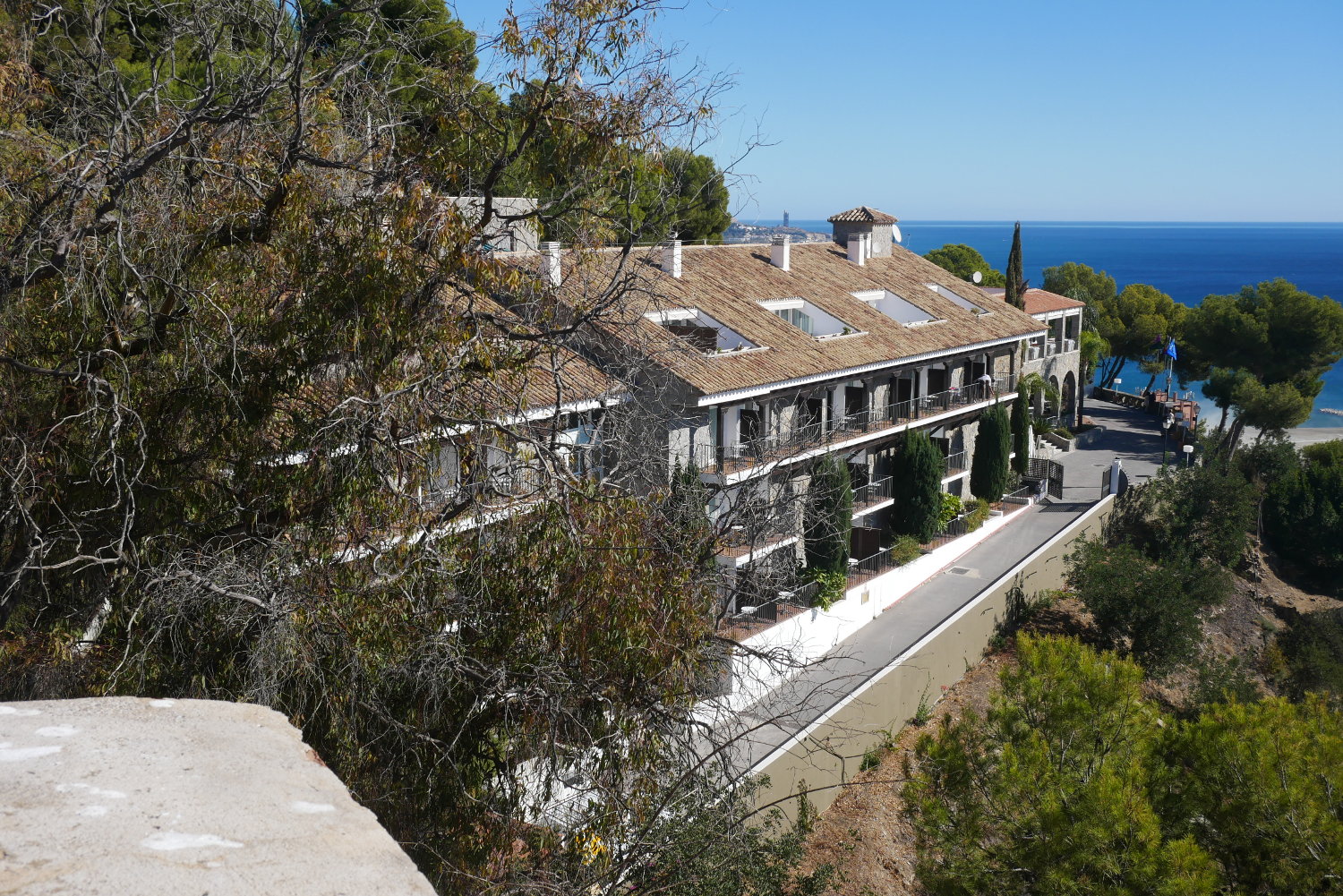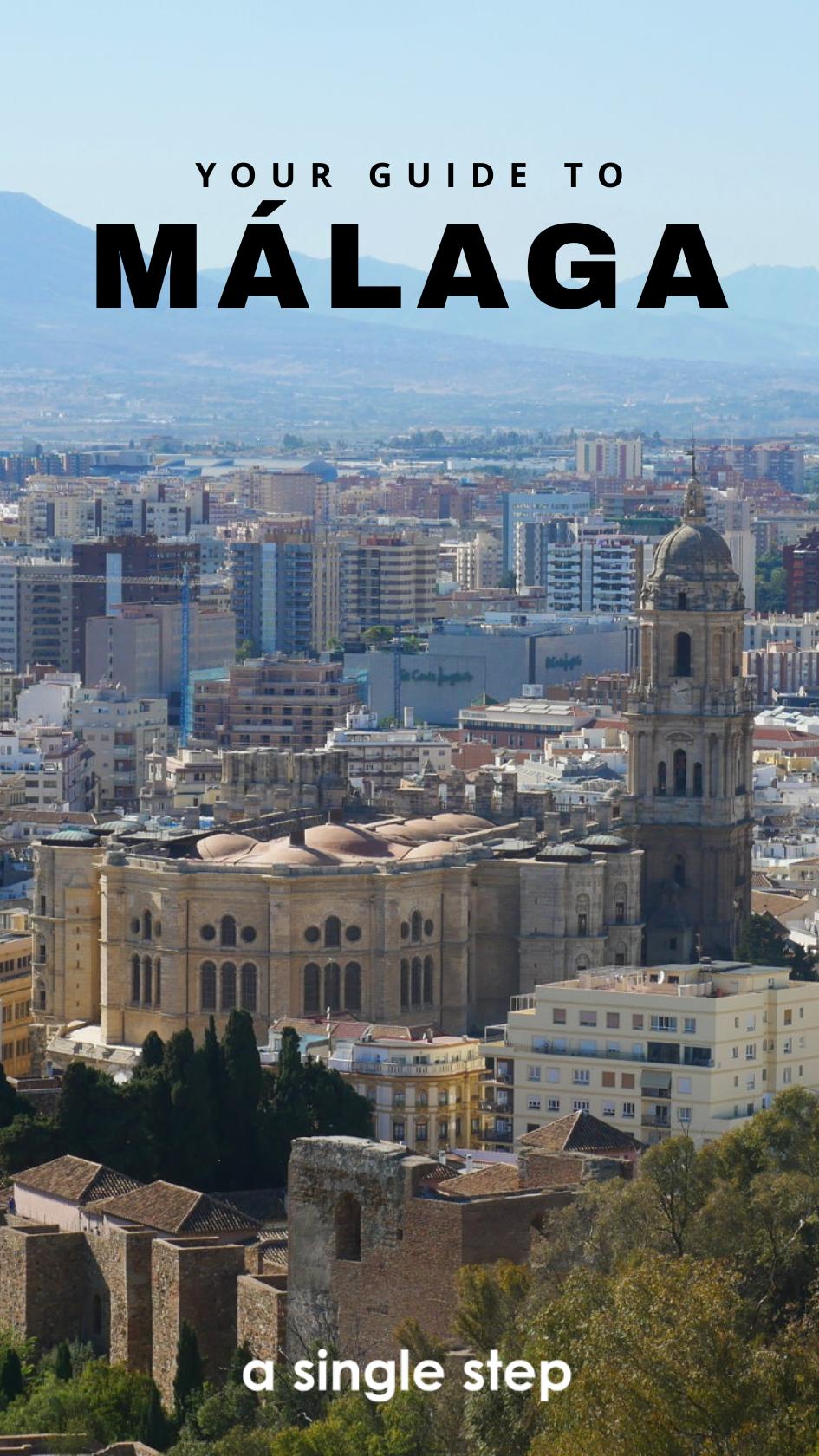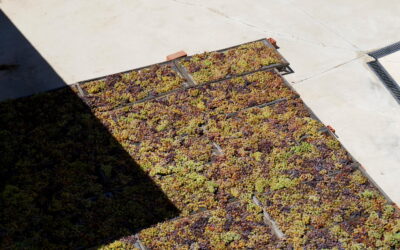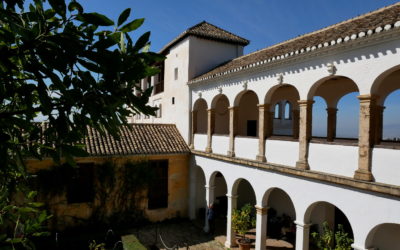Birthplace of Pablo Picasso and home to one of Europe’s best climates, Málaga is, for me, one of the continent’s most criminally underrated cities. With an abundance of history, culture, and attractions, world class gastronomy, year-round sun, and notoriously cheap flights from the UK, should be a city making its way right to the top of your bucket list.
Things to See and Do in Málaga
Málaga Cathedral
Málaga Cathedral (Catedral de la Encarnación de Málaga), is a majestic architectural gem located in the heart of the city. Construction began in the early 16th century, after the reconquest of the city from the Moors by the Catholic Monarchs. Built on the site of a former mosque, the construction of the cathedral took nearly 250 years to complete due to various financial and political challenges, resulting in a unique blend of architectural styles. The original plans for the Cathedral included two towers, but the lack of funding resulted in only one being completed, giving it the affectionate nickname of ‘La Manquita’, roughly translated as ‘one-armed woman’.
Tickets to the Cathedral start at around €8.00 for a general ticket, and includes an audio guide to its history and importance to the city. For some of the best views of the exterior of the Cathedral, there are a few bars and restaurants in the adjacent Plaza del Obispo. Though slightly a tourist trap and therefore more expensive than other nearby establishments, you can’t beat the views of the Cathedral whilst enjoying a beer and some tapas!

Alcazaba de Málaga
The Alcazaba of Málaga is a fortified palace set upon the slopes of Mount Gibralfaro. A strategic location overlooking the city and the sea towards Africa, the construction of the Alcazaba began in the late-8th century during the Moorish occupation of the Iberian Peninsula, whilst much of the current construction took place in the 11th century. Older than its counterparts in Seville and Granada, the complex consisted of double-walled fortifications, towers, and gates, which left the interior palace near-impregnable.
Tickets can be purchased for the Alcazaba, with plenty of areas to explore including beautiful gardens and courtyards, gates, walls, towers, and the palace itself. You can also combine a ticket with the Castillo de Gibralfaro located above the Alcazaba.



Castillo de Gibralfaro
The Castillo de Gibralfaro is perhaps the city’s most iconic image, dominating the city and present in Málaga’s official flag and the seal. Located above the Alcazaba at the very peak of Mount Gibralfaro, the castle was built in the early-10th century on the site of an old Phoenician lighthouse.
Today, the fortified walls rise out of the dense pine trees, with visitors enjoying walking the ramparts, along with the courtyards, and buildings within. If walking to the castle, be sure to take some bottled water and leave plenty of time to rest, particularly in the heat. There are some fantastic photo opportunities across the city as you make the climb. Within the castle there’s a kiosk offering food and drink, and the crisp beer is absolutely well-earned after the hot climb to the top. Alternatively, you can take the tourist bus to the top, or call a taxi.
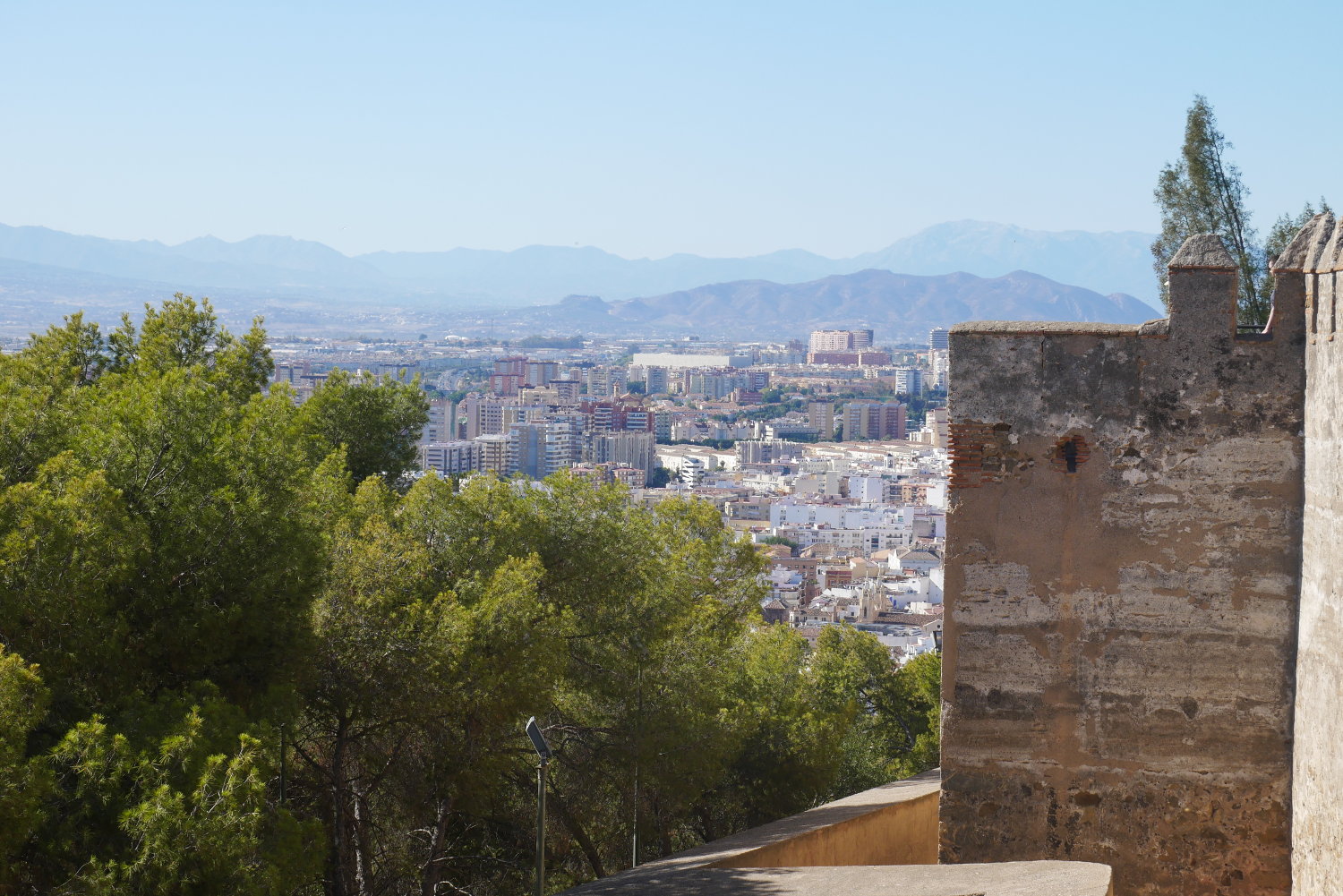
Teatro Romano
Lying at the foot of the Western slope of the Alcazaba, Málaga’s Roman Theatre is the oldest monument in the city, dating back to the 1st century. Constructed under the Roman Emperor Augustus, the theatre was in use until the 3rd century. Under Moorish occupation, the theatre was used as a quarry to build the Alcazaba, and subsequently you can find the stones used in the theatre in the fortress today. What remained of the theatre was then left to ruin and only rediscovered in 1951, when the site was being built on for the city’s Casa de Cultura, and the first archeological remains were found. A period of excavation followed until the whole site was restored and opened to the public.
The theatre is separated into three parts: the Cavea, Orchestra, and the Proscaenium. Entrance to the ruins is free and is made through the adjoining visitor centre.
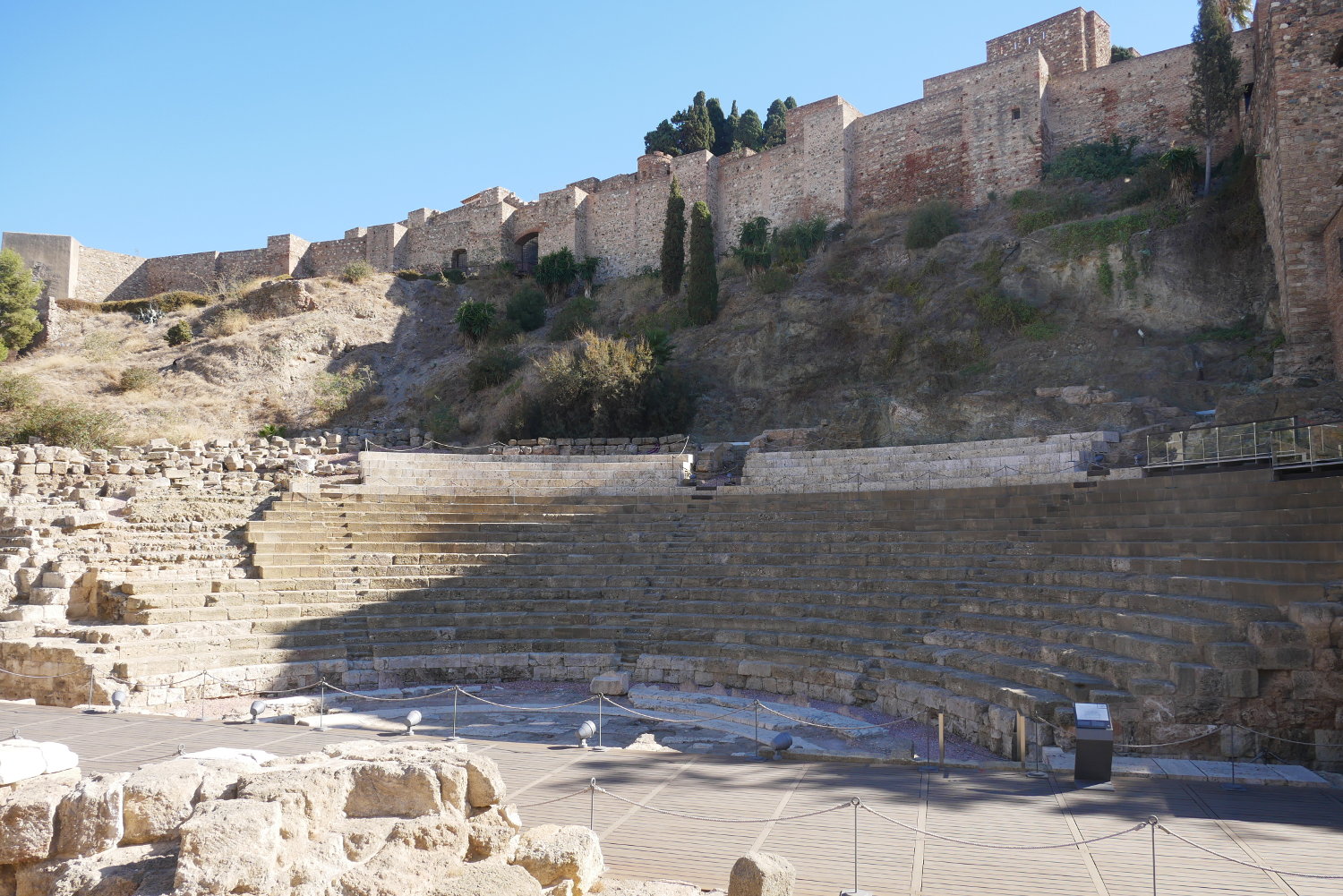
Picasso Museum
As the birthplace of one of the world’s most renowned artists, Málaga makes sure to celebrate its most famous son. You can explore the history of the painter at the Picasso museum, located in a restored 16th century palace on Calle San Augustín. The museum showcases paintings from the different eras of Picasso’s life, highlighting how his state of mind and the external political environment influenced his style.
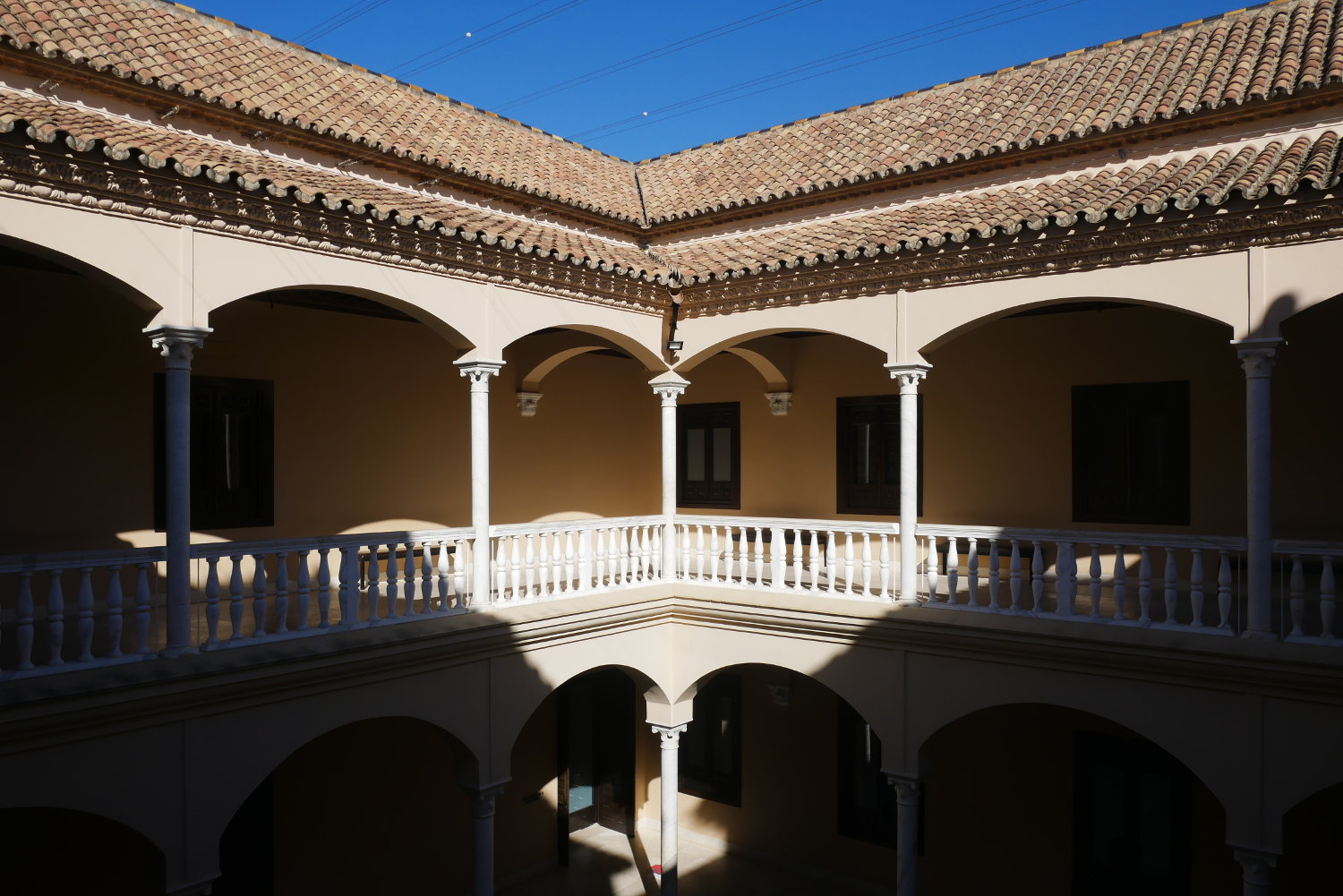
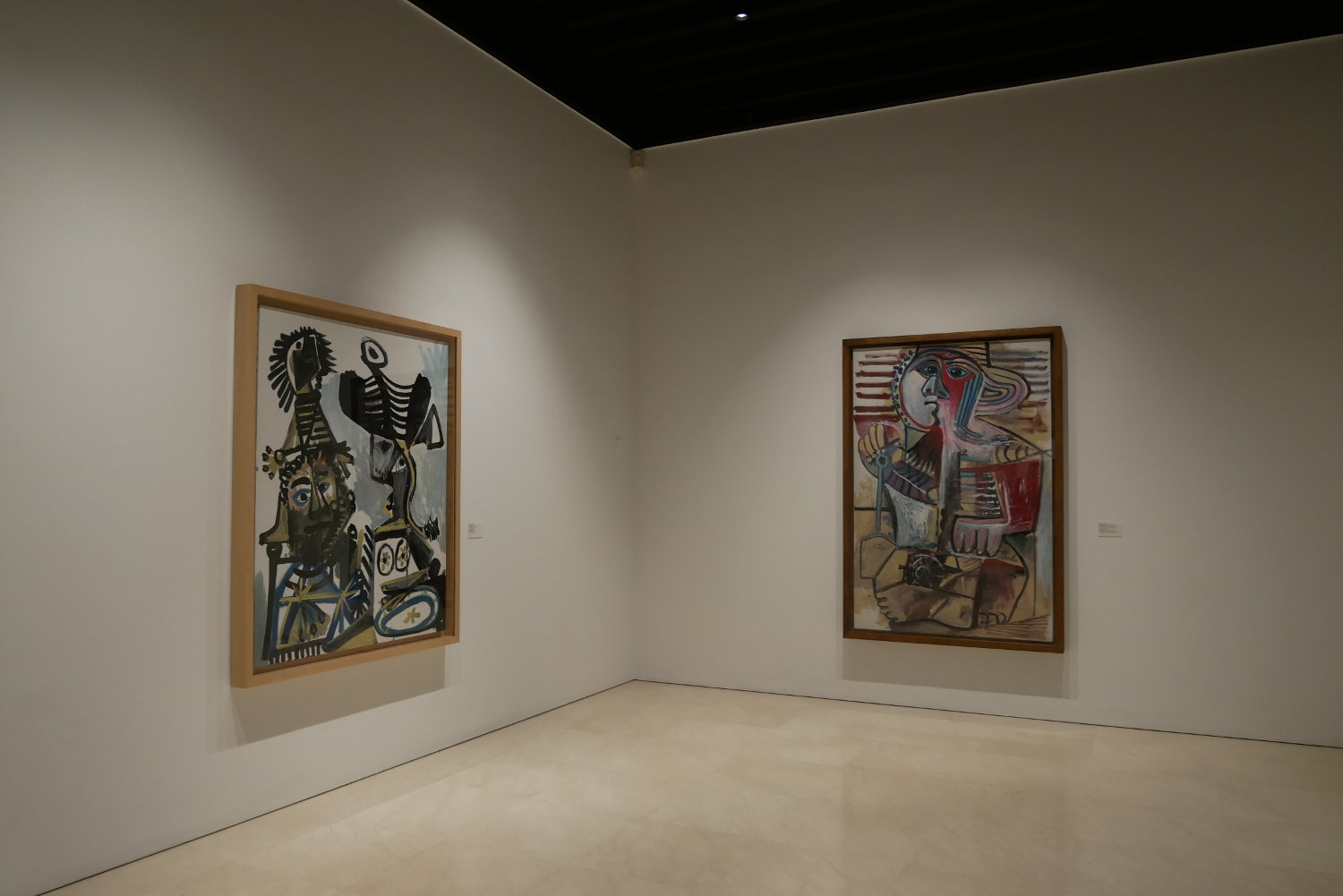
Málaga Museum
Set to the North of Málaga’s Paseo del Parque is the Málaga Museum. Similar to the Picasso Museum, one of the most striking features of the museum is the building within which it is located. The building, the Palacio de la Aduana, is an impressive building modelled on Renaissance Italian palaces. Constructed in 1791, it was originally built as a customs house for Málaga’s Port and also was used as a tobacco factory before housing the museum.
Today, the museum brings together the city’s provincial museums of fine art and archeology. Opened in December 2016, the museum contains over 2,000 pieces across its eight rooms. Admission is free for EU citizens.
Mercado Central de Atarazanas
Like many Spanish cities, the central market is the hub of daily life in Málaga. Located on the Western side of the historic centre of the city, the bustling market was built on the site of a 14th century Moorish shipyard, and the Southern archway entrance, though much renovated, is all that remains of this structure to this day. In the 19th century, plans to build a market on the site were approved, and construction began with architect Joaquín Rucoba, who was also responsible for the grand bullring in the city. The whole site underwent further major refurbishment in the 1970s. On the Northern side of the market, perfectly framed by Calle Olózaga, is a stunning stained glass window depicting the history of the city.
Apart from purchasing fresh fruit, vegetables, meat and fish, the market also has a gastronomy offering popping up in the corners. Bar Mercado Atarazanas has seating inside as well as along the Southern edge outside, and specialises in fresh seafood.

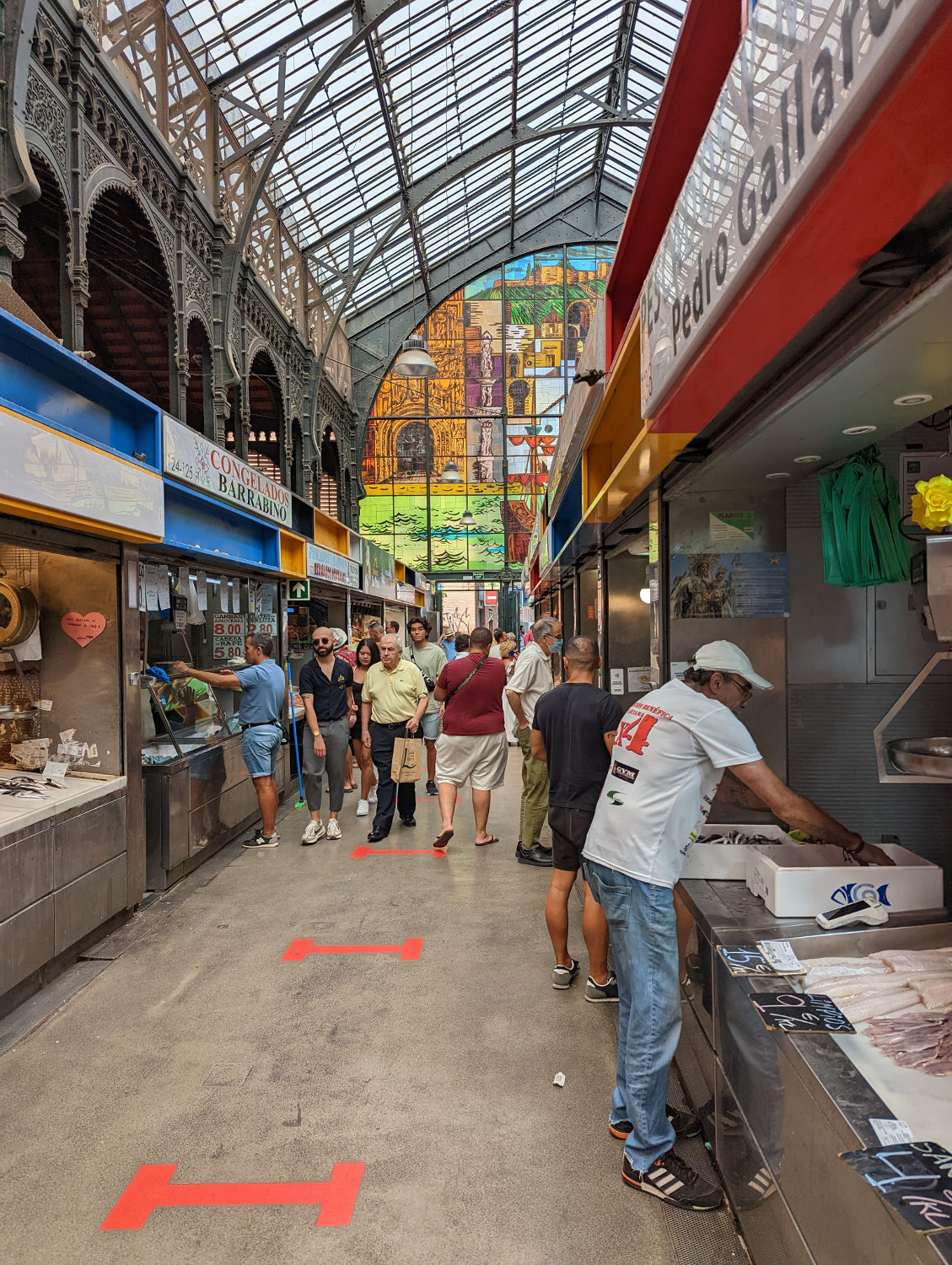
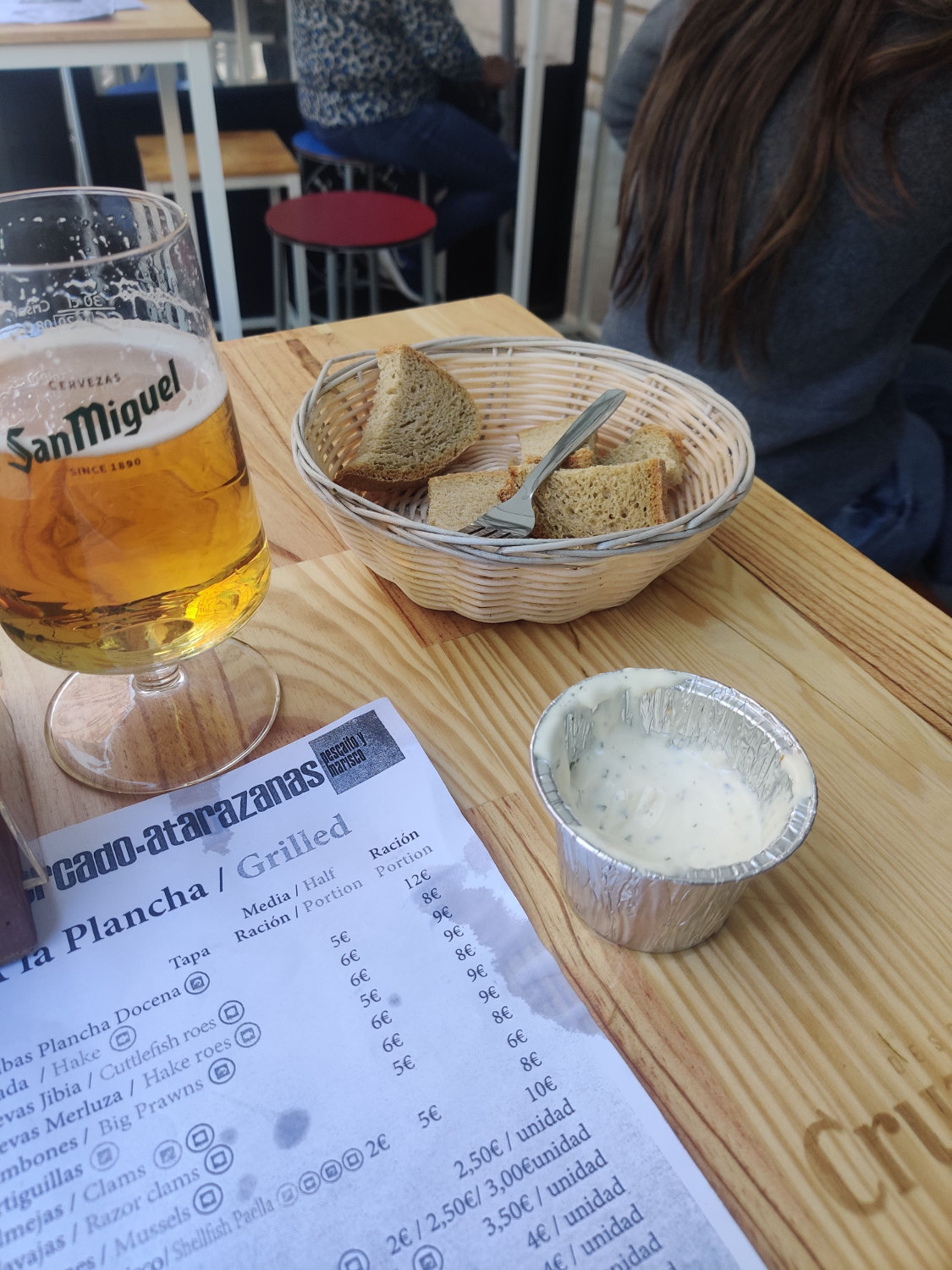

Bodega Bar El Pimpi
Ideally situated by the Picasso Museum, Bodega Bar El Pimpi is perhaps the city’s most popular and well known restaurant. Opened in 1971 inside an 18th century mansion, El Pimpi has a warm and welcoming feel across its converted storerooms, adorned with the famous faces that have passed through, including the city’s two most famous sons: Pablo Picasso and Antonio Banderas.
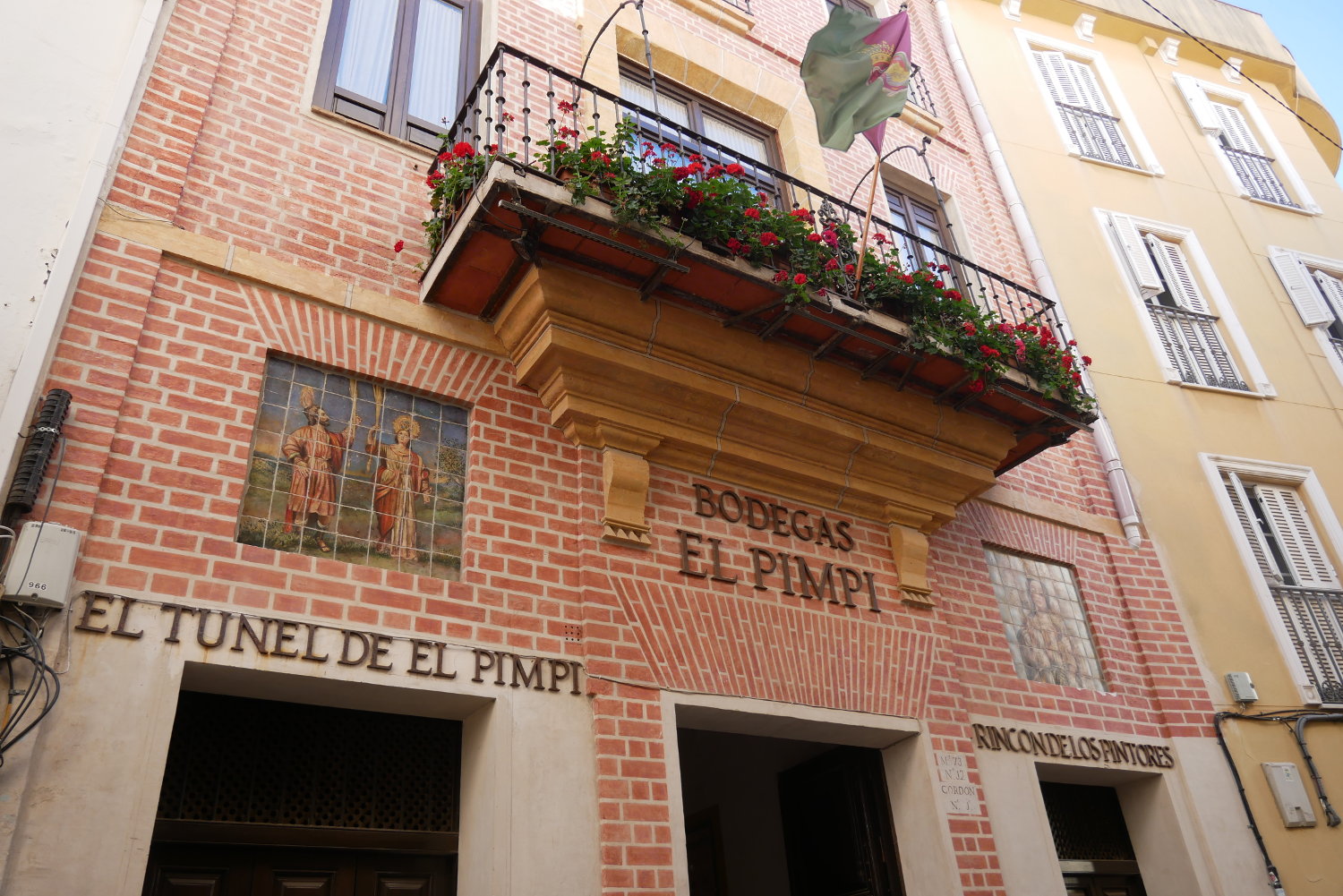
Parque de Málaga
Adjacent to Málaga’s port and at the foot of the path leading to the Alcazaba is the city’s 30,000 square metre park. Though the park is very conventionally rectangular in appearance, once you enter the winding paths and various points of interests, you can get lost amongst the trees despite its proximity to the busy roads and bustling port. Featuring botanical gardens, various fountains and statues, and even an open air theatre, the park has grown and developed since its inception in the 19th century, and now extends to the landscaped park and rose gardens adjacent to the town hall across the main Paseo del Parque road.
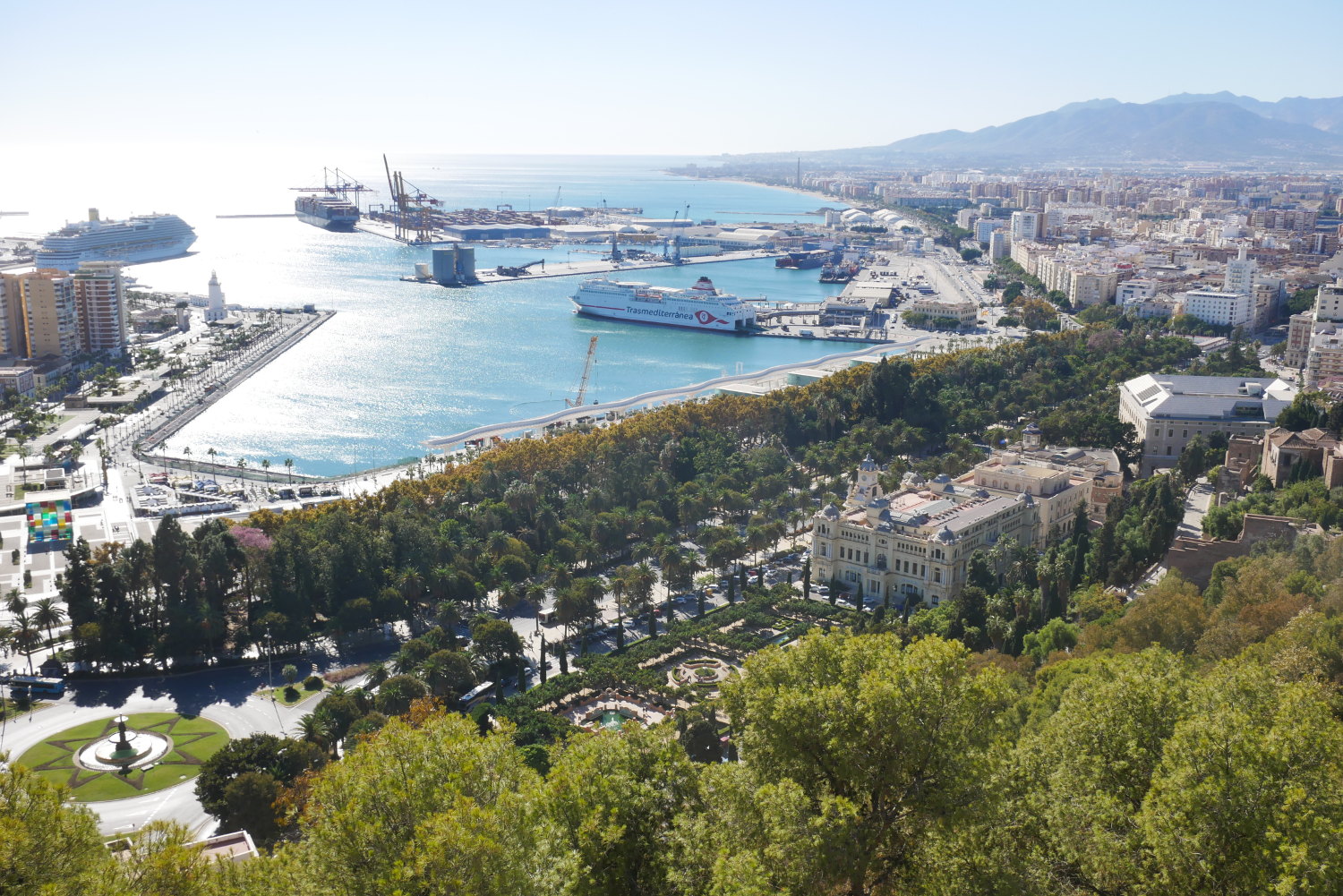
La Malagueta Beach
One of my favourite things about Málaga is its appeal for many different types of tourists. Culture buffs can enjoy the historic centre, the many museums, and the wonderful architecture; from Michelin-starred restaurants to the freshest seafood at the Chiringuitos, foodies are taken care of; and for those that are looking for a beach and sun holiday, Málaga also has you covered. The city is one of those rare destinations that offers both a city and beach break, with the fabulous La Malagueta Beach located just minutes walk from the historic centre.
La Malagueta is a 1.2km long Blue Flag accredited beach running between the port and Playa de la Caleta to the city’s East. It has excellent facilities for all of the family, including play areas, sunbeds, a caged football pitch, and of course a range of Chiringuitos within which to try Málaga’s famous sardines, cooked in front of you on the BBQ.
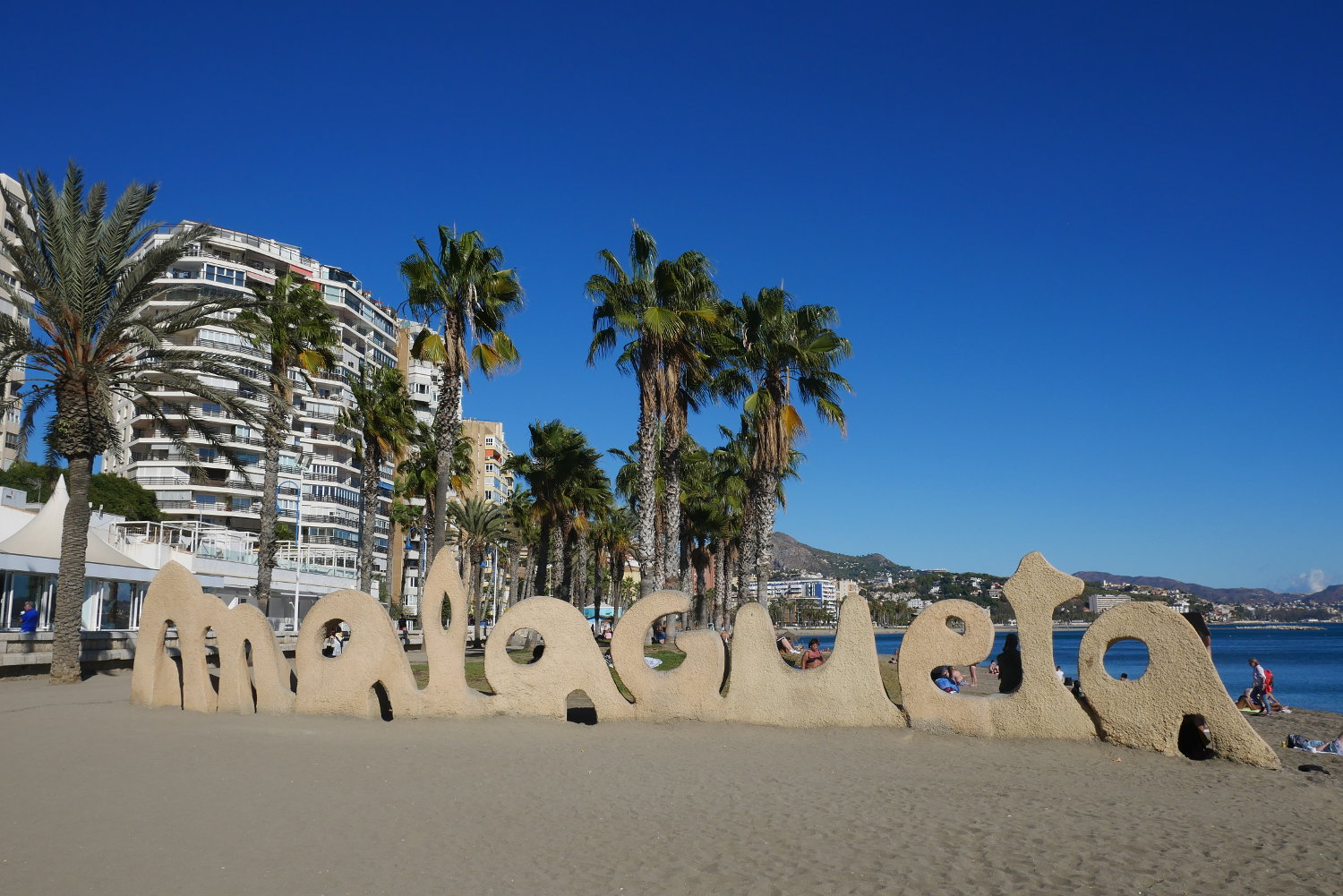
Muelle Uno
Officially opened in 2011, Muelle Uno (Pier One) is a modern, redeveloped area of the port of Málaga. Offering fantastic views of the historic centre and sunsets out to sea simultaneously, the area has become a significant leisure destination for the city.
Muelle Uno is home to the Centre Pompidou, a modern, coloured-glass building that houses the first variation of Paris’ famous arts centre outside of France. The venue houses cultural events and performances throughout the year, alongside artwork and exhibitions. Along the rest of the pier, you can find plenty of food and drink outlets, including the Michelin-starred Restaurante José Carlos García, as well as over 30 shopping outlets featuring well-known brands such as Lacoste and BOSS.

Soho
Bounded by the port, the Guadalmedina river to the West, and La Alameda street to the North, is the triangular Soho neighbourhood. Known as the city’s creative art district, you’ll find plenty of popular independent cafes, artistic spaces, and street art and murals.
Previously a neglected area of the city, Soho was born out of a public drive to reclaim and redevelop the neighbourhood, and has now become a key area of the city to explore and enjoy.
Calle Larios
Perhaps Málaga’s most famous street, Calle Larios is a must for those visiting the city for the first time. Stretching 350m from near the Western end of the Málaga’s park to the Plaza de la Constitución, Calle Larios is one of the most sought after shopping locations in all of Europe.
The street is Málaga’s premier shopping area, and is home to numerous events and festivals throughout the year. At Christmas, lights adorn the whole length of the street, as locals and visitors alike flock to the area for their Christmas shopping. As a central hub of the city, it’s not unusual to see locals playing chess along the many benches that line the street, and is therefore a wonderful place to people-watch and soak up the atmosphere.
Málaga Football Club
Currently plying their trade in the third division of Spanish football following relegations from the first division in 2017/2018 and the second division in 2022/2023, Málaga Club de Fútbol’s men’s team play at La Rosaleda stadium in the North of the city. The 30,000 seater stadium has played host to Champions League games and national team games, as well as fixtures during Spain’s 1982 World Cup. Visitors can tour the stadium and club museum in order to discover more about the club’s history, with tours available in both Spanish and English.
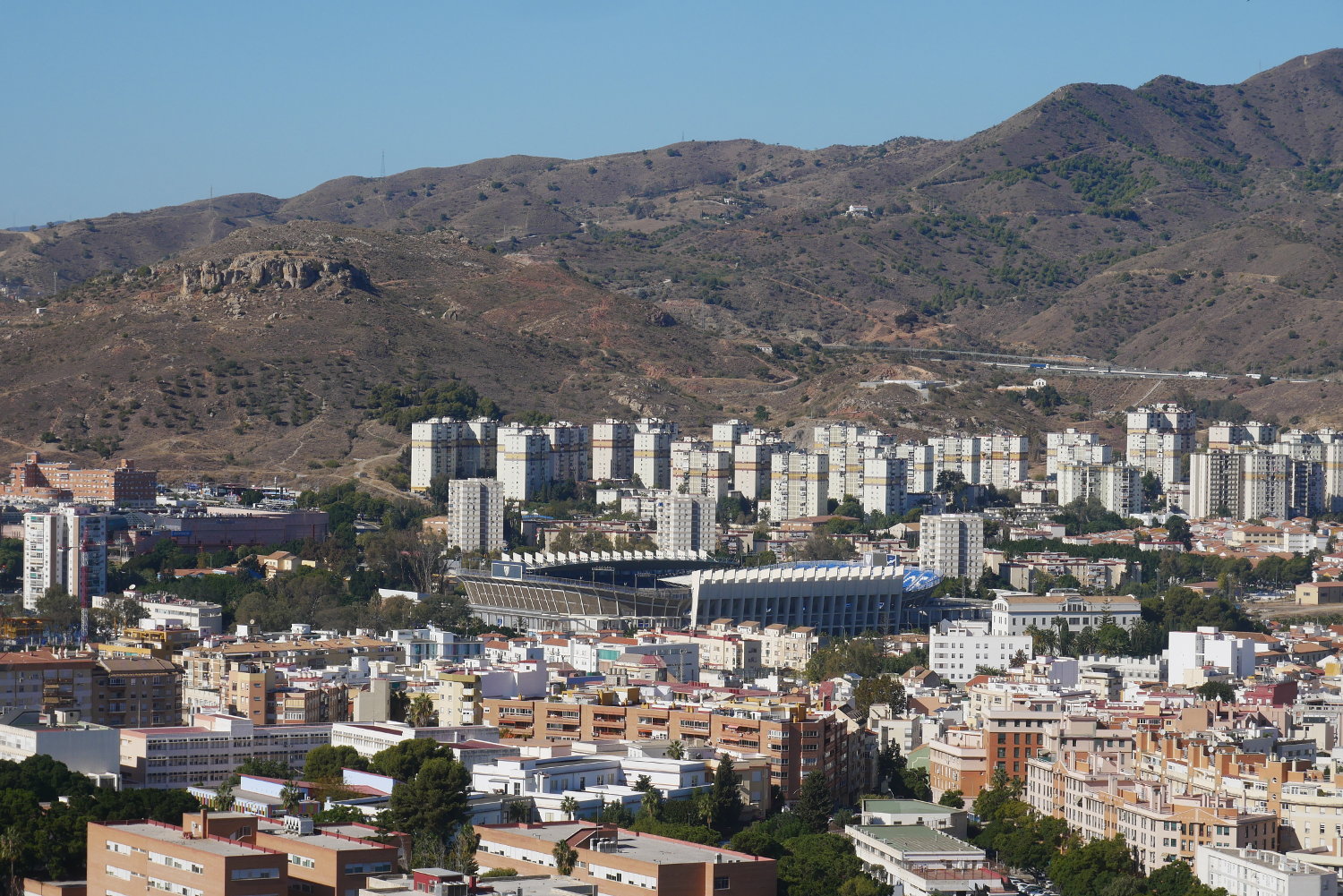
Day Trips from Málaga
Although absolutely worth visiting and spending time in itself, Málaga’s central location in Andalucía, and the home to the region’s main international airport, Málaga makes a fantastic base to explore the wider region on a day trip. From dreamy Ronda and scorching Seville to the mind-blowing Alhambra Palace in Granada and ski slopes of the Sierra Nevada, Málaga is the perfect gateway to exploring all the region has to offer.
Bonus: Where to Stay in Málaga
As one of Southern Spain’s most popular cities, Málaga isn’t short of accommodation options, offering everything from budget stays and Airbnb apartments, to luxurious pads for those special occasions.
For one of the city’s top stays, the Parador de Málaga is located beside the Castillo de Málaga on Mount Gibralfaro, offering unbeatable views across the city. Hidden amongst the pines of the mountain and featuring a rooftop pool, the Parador de Málaga has 38 comfortable, traditionally Spanish bedrooms. The hotel is a top choice, offering both a serene, relaxed environment but within easy walking distance of the city.
